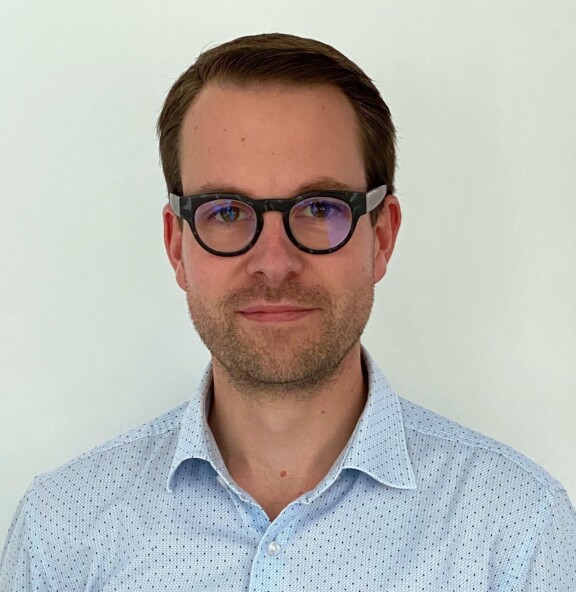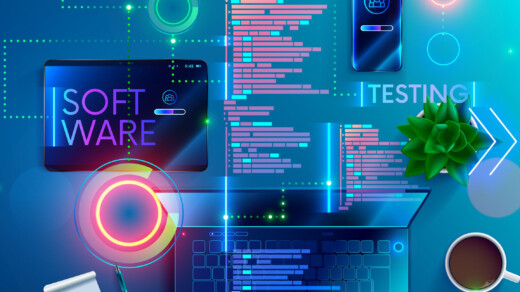The result of collaboration? A more efficient development process.
DT Valley supports and/or guides R&D teams in developing or optimizing mechatronic systems. We focus in particular on the design processes involved.
In this context we also provide our own EPSim tool. A virtual platform for integrated systems, developed in cooperation with the University of Antwerp and Flanders Make. This allows testing much earlier in the design process.
The added value of DT Valley
4 reasons why engaging DT Valley represents great added value.
You get a lot of know-how with DT Valley. Our many years of experience in research and development combined with our extensive knowledge are a strong base for analyzing and solving your question.
We ensure that systems are developed in a consistent manner by coordinating the various development domains. As a result, everything works better together at the end, and you lose less valuable time.
It goes without saying that being able to develop and test faster saves you a lot in terms of costs. Developing complex systems in a consistent way saves you iterations in the development process. In addition, our methods provide the most optimal solution where there are several options possible. I.e. the most cost-efficient, the most energy-efficient or the fastest. Or a combination of these.
If left to us, engineers would no longer work in isolated teams focussing on a single aspect. We ensure that everyone is on the same page and that everything is well integrated. As a result, development proceeds more smoothly and the complex system works better. This shortens the development process, meaning less frustration and greater satisfaction.
Who we are
Future-proof system developers
DT Valley stands for Digital Transformation Valley, as well as for Digital Twin Valley. We currently help companies with future-proof system development, enabling them to save development time and costs. We work with various well-known tools, with our own tool and with tools customised by us.
University of Antwerp/Flanders Make spin-off and EPSim licensee
As a spin-off from the University of Antwerp and Flanders Make, you can rely on our extensive expertise. Founder Ken Vanherpen conducted research into state-of-the-art solutions during his Ph.D. He created a tool for consistent system development during his post-doctoral research: EPSim. The exclusive licence is now held by DT Valley. Further developments are made possible with the support of VLAIO.





Publications
Founder Ken Vanherpen
Education/training
- Master’s in Industrial Sciences Electronics - ICT (Karel de Grote-Hogeschool / University of Antwerp)
- Doctor of Applied Engineering Sciences (University of Antwerp)
Expertise
- Researching and applying consistent (model-based) system development
- Various programming languages
- Various modelling and simulation techniques
- Design and test methods for complex systems
- Integrated hardware and software
- Real-time operating/control systems
- Customized tool development
What do we believe in?

Model-based system design
We believe companies can save a lot of time when developing complex systems by using model-based design techniques. This offers many possibilities such as consistent system design, traceability throughout the design process, faster and more efficient testing, and automatic code generation. So, next level system development.
01

Future predictions
We want to go a step further in the future with your developed models. We can retrieve data in the built design via connected systems. A digital replica of the physical object, the digital twin, provides us with a virtual representation of how the built system or machine behaves in real time and in the future. Based on this information, we will be able to make predictions about the maintenance of machines, for example. This will ensure that operation can always proceed in an optimum manner.
02
How do we operate?
01
Exploration phase
We sit together in one or two non-committal meetings for the purpose of analyzing the question. We look at whether DT Valley has the most appropriate expertise to solve the problem, what is needed, and estimate how long it will take.
02
Proposal
If from our talks turns out that DT Valley is the right partner for you, we will explore in which setting we can collaborate. Finally, we will prepare an attractive proposal.
03
Getting started
After approval of the proposal, we start working in the R&D team or we work remotely. We set up regular technical meetings. We also check regularly with management regarding satisfaction. We do this during the collaboration phase and afterwards.
Cases

Offline digital twin for data analysis
Company data is often stored in different formats and in different databases.
DT Valley assisted Flanders Make in the creation of an offline digital twin. Using knowledge graphs, a team can hereby quickly and flexibly analyze the data without having to worry about the location or how this data has to be technically retrieved.
What tools do we use?
What tools we use depends on the matter at hand. If an existing tool supports the customer's needs, we use it. Otherwise, we make a custom tool, which we integrate.
A tool built on our expertise regarding embedded hardware and software implementation. It is an integrated simulator that combines two completely different domains: the control domain and the embedded hardware and software domain. We can use EPSim to do virtual hardware-in-the-loop testing. Delays that will occur are already taken into account during simulation in the early design phases. This gives you a feel for the complexity of the implementation early in the development process. This means time savings and cost efficiency.
A widely used tool for the model-based design of complex systems. We have a lot of experience in using different toolboxes, generating code, transforming from or to other tools, as well as integrating into heterogeneous toolchains.
Eclipse EMF (open source) and Obeo (similar, but closed source) are widely used modeling frameworks that enable their users to build custom tools and applications. We regularly use this to create both graphical and textual domain-specific languages. The transformation from one language to another or integration with existing tools is also possible.
This is a very stable environment to support system development. We use this to describe at block level how a system or machine is put together, how the design process will run, and how tests will be performed.
An open-source framework that can be used to model knowledge-based information (ontologies). This allows us to make connections between two different domains. We can also use this tool to request data from databases more efficiently.
Interested in cooperation?
Ask your question, make a non-committal appointment or call us.

